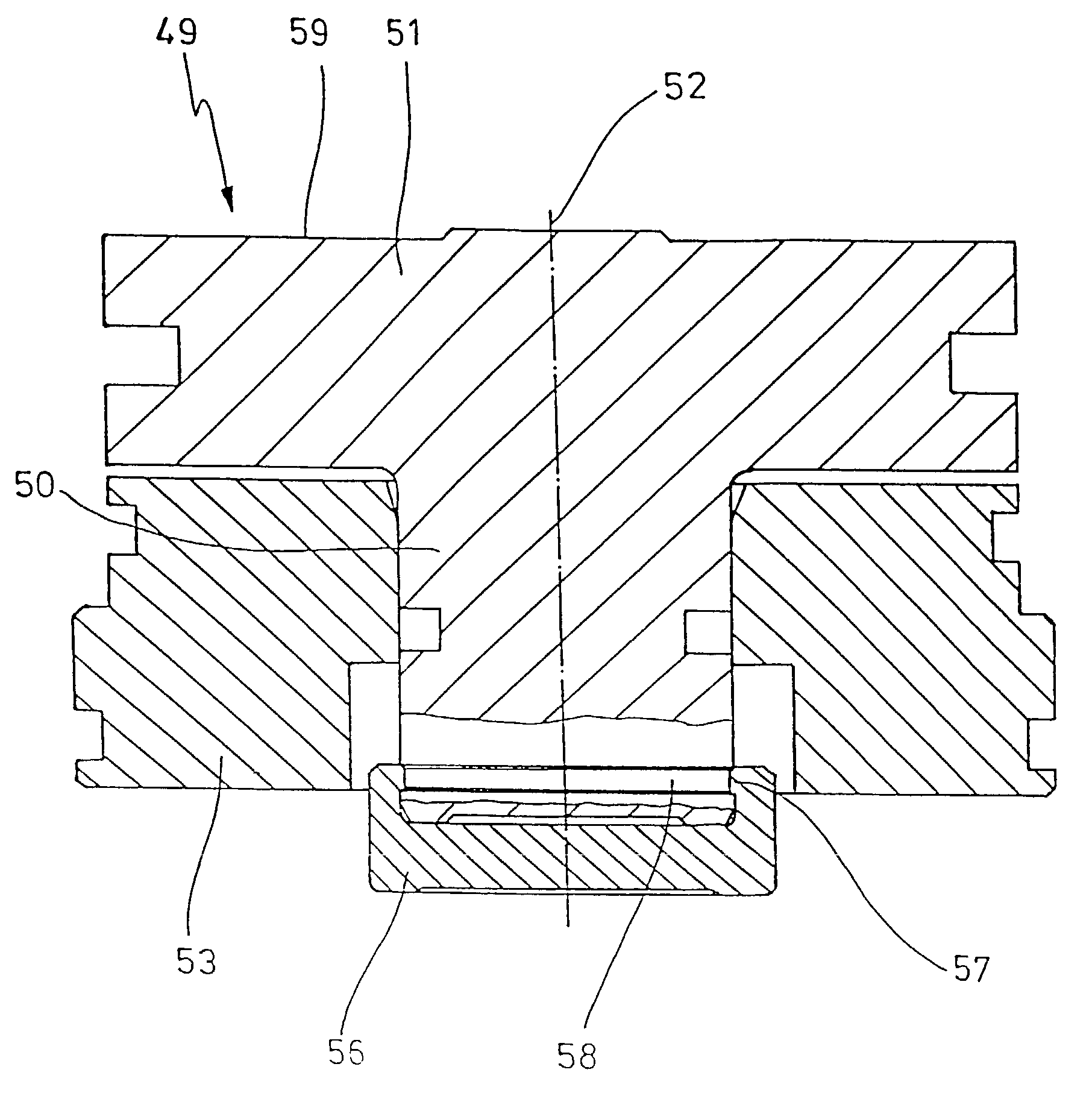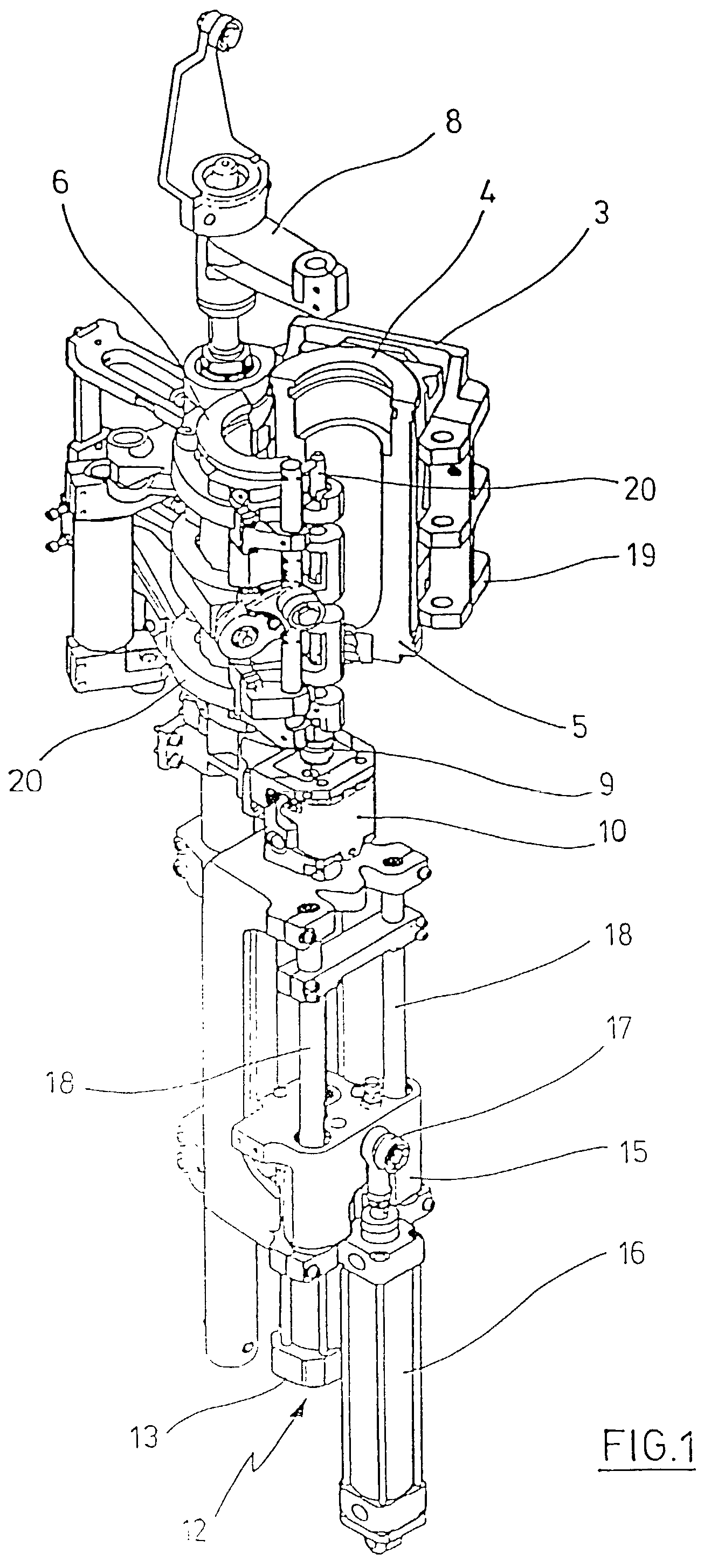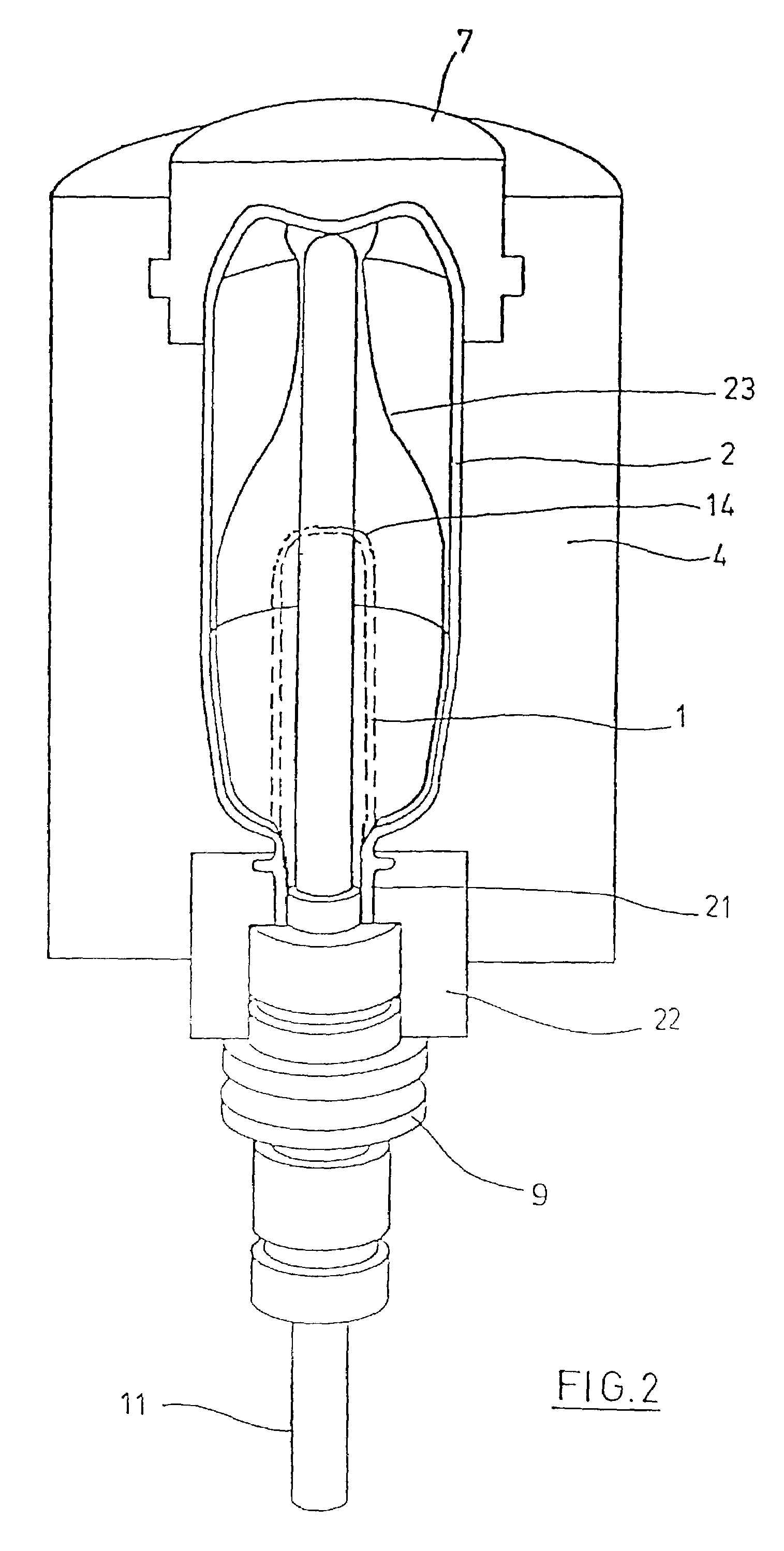Device for pneumatic control
- Summary
- Abstract
- Description
- Claims
- Application Information
AI Technical Summary
Benefits of technology
Problems solved by technology
Method used
Image
Examples
Embodiment Construction
[0041]The device for pneumatic control can for example be used to control the delivery of compressed air in a device for blow molding. The basic structure of a device for forming preforms (1) into containers (2) is shown in FIG. 1 and FIG. 2.
[0042]The device for forming the container (2) consists essentially of a blow station (3), which is equipped with a blow mold (4) into which can be inserted a preform (1). The preform (1) can be an injection-molded part of polyethylene terephthalate. To permit insertion of the preform (1) in the blow mold (4) and to permit removal of the finished container (2), the blow mold (4) is composed of mold parts (5, 6) and a bottom piece (7) that can be positioned by a lifting apparatus (8). The preform (1) can be held in the area of the blow station (3) by a transport mandrel (9), which together with the preform (1) passes through a plurality of treatment stations within the device. However, it is also possible to insert the preform (1) directly in the...
PUM
| Property | Measurement | Unit |
|---|---|---|
| Pressure | aaaaa | aaaaa |
| Pressure | aaaaa | aaaaa |
| Fraction | aaaaa | aaaaa |
Abstract
Description
Claims
Application Information
 Login to View More
Login to View More - R&D
- Intellectual Property
- Life Sciences
- Materials
- Tech Scout
- Unparalleled Data Quality
- Higher Quality Content
- 60% Fewer Hallucinations
Browse by: Latest US Patents, China's latest patents, Technical Efficacy Thesaurus, Application Domain, Technology Topic, Popular Technical Reports.
© 2025 PatSnap. All rights reserved.Legal|Privacy policy|Modern Slavery Act Transparency Statement|Sitemap|About US| Contact US: help@patsnap.com



